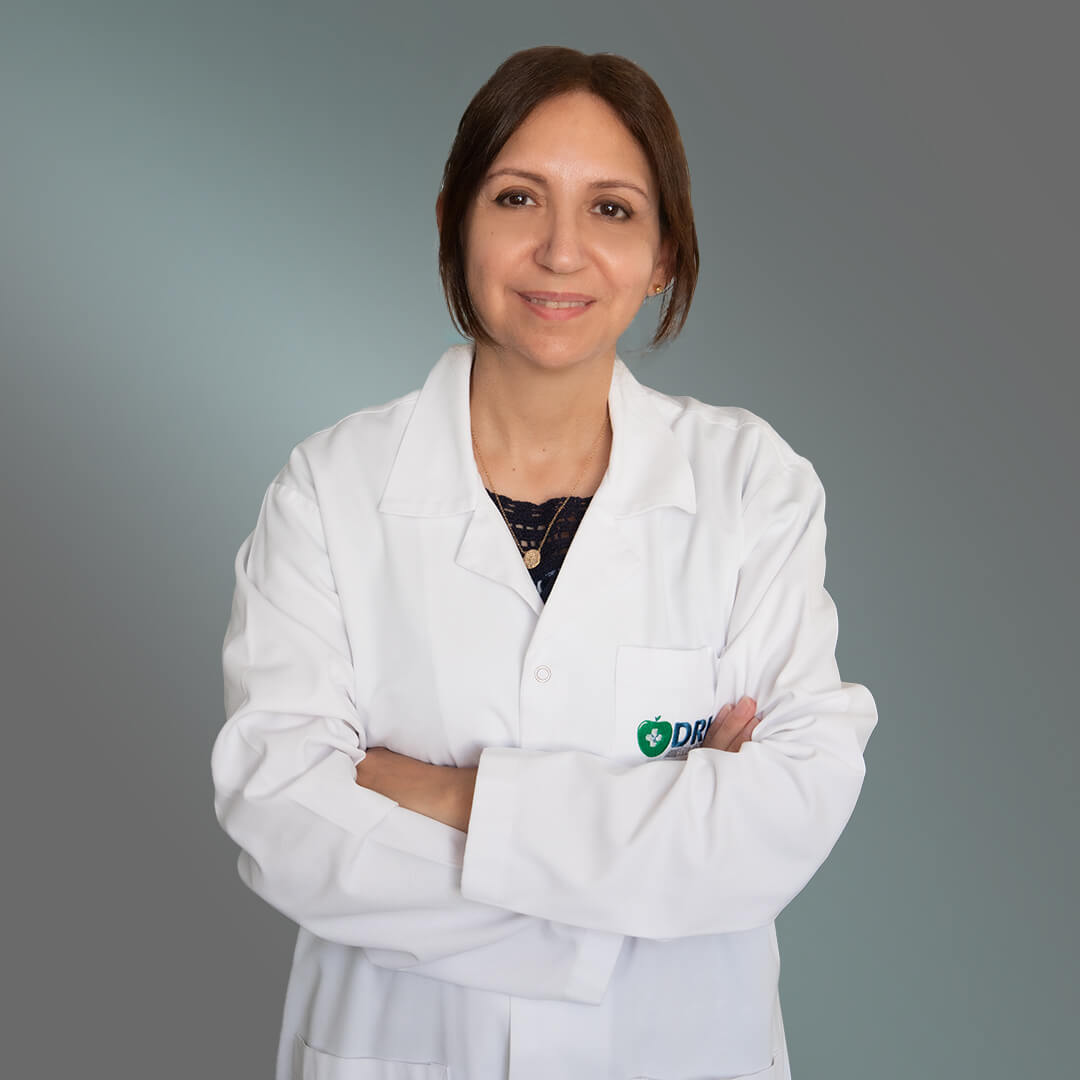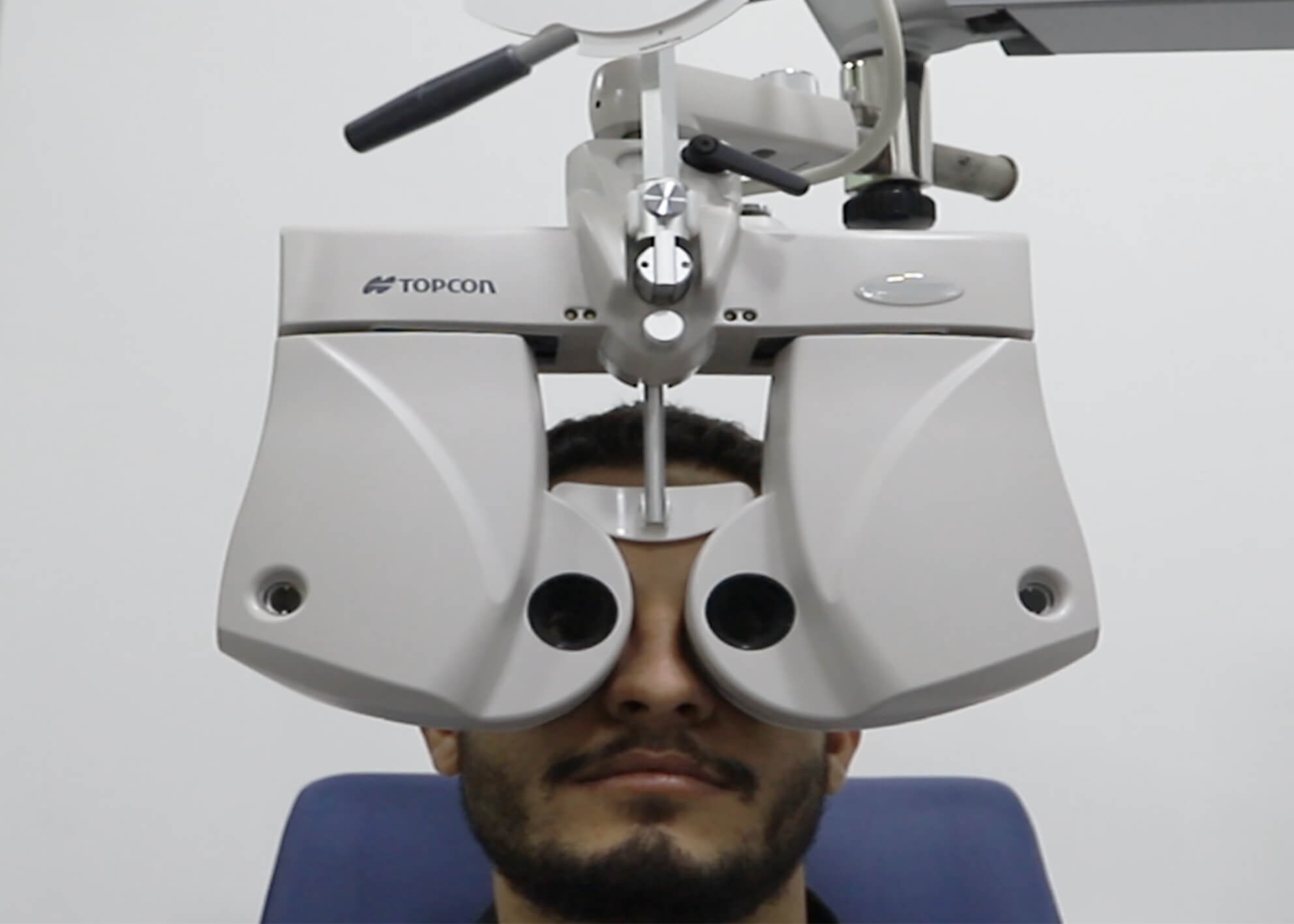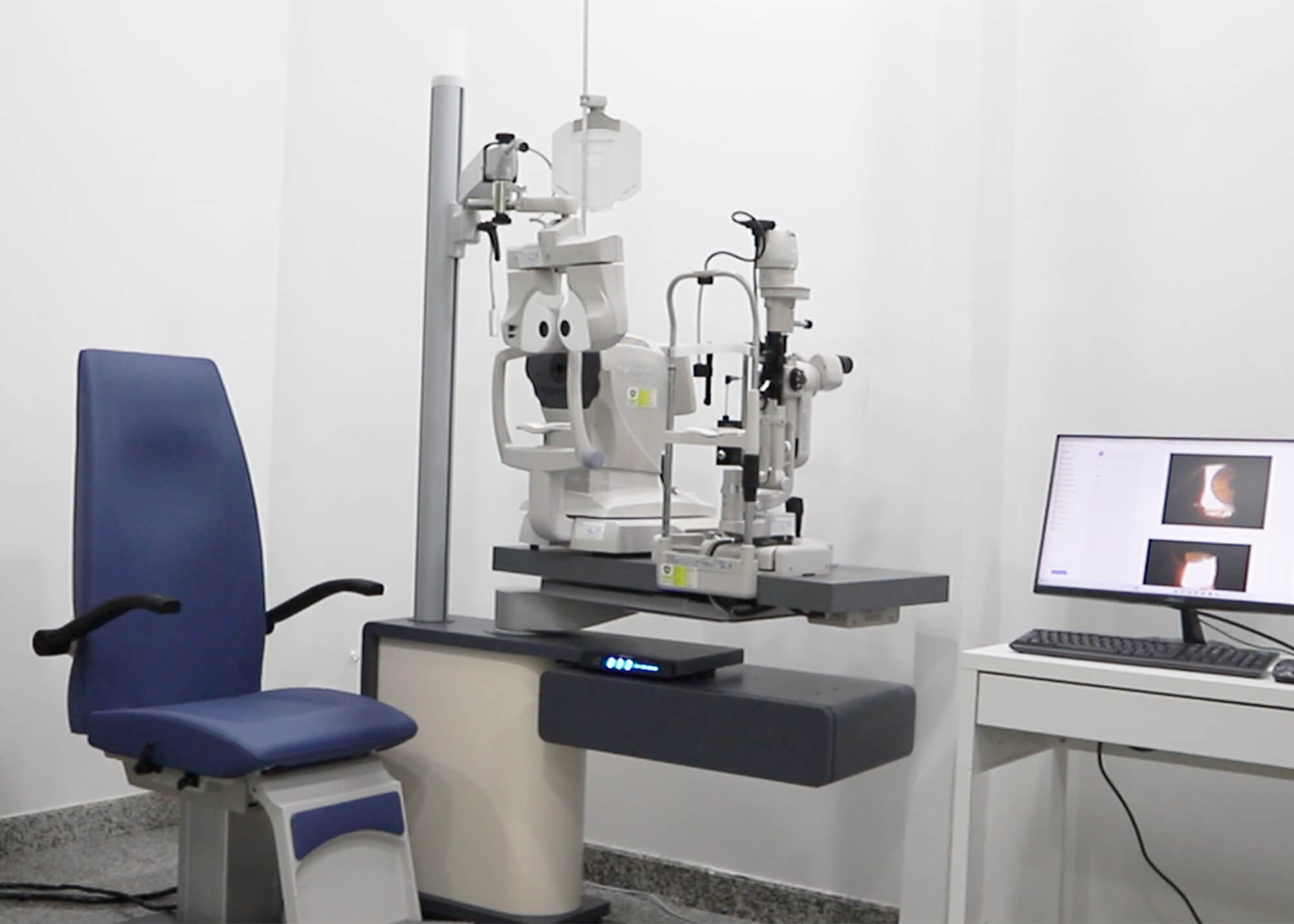Eye Investigation at Eye Clinic DRHC Dubai
IOL Calculation (Biometry):
Accurate intraocular lens power calculation aims to provide an intraocular lens (IOL) that fits the specific needs and desires of each patient
The development of better instrumentation for measuring the axial length of the eye and the usage of precise mathematical formulas to perform the appropriate calculations have significantly improved the accuracy with which our surgeons determine the intraocular lens power.
To determine the power of IOL we measure the following factors:
- The eye’s axial length
- Corneal power (K readings)
- Anterior chamber depth
- Lens thickness
- Corneal topography
Corneal Topography:
Corneal topography is a non-invasive medical imaging technique for mapping the surface curvature of the cornea (outer structure of the eye). Since the cornea is normally responsible for some 70% of the eye’s refractive power, its topography is of critical importance in determining the quality of vision and corneal health
It is very important to be done for diagnosis and follow-up of some corneal diseases such as keratoconus, and before refractive surgery.
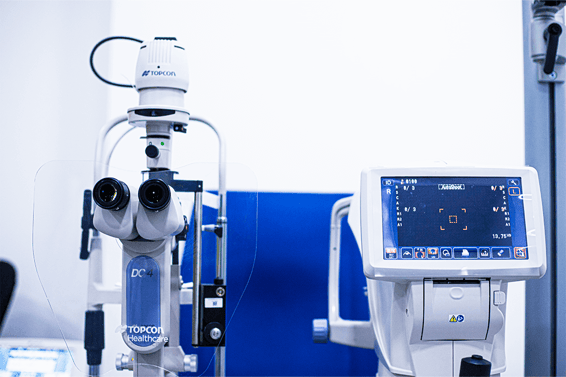
Optical coherence tomography (OCT) is a non-invasive imaging test. OCT uses light waves to take cross-section pictures of your retina (macula) and optic disc.
With OCT, your ophthalmologist can see each of the retina’s distinctive layers. This allows your ophthalmologist to map and measure their thickness. These measurements help with the diagnosis of retinal diseases including age-related macular degeneration (AMD) and diabetic eye disease. They also provide treatment guidance for glaucoma and optic nerve diseases.
Anterior segment OCT(AOCT):
It is a minimally invasive painless test with no contact with the eye. It detects very subtle morphological changes to the eye structures, providing extremely valuable information beyond examinations using a slit lamp.
This test provides an objective assessment of aspects such as the thickness of the cornea in patients with keratoconus or candidates for refractive surgery, the dimensions of the anterior chamber for intraocular lens implantation, or the iridocorneal angle (forming the cornea with the iris) in cases of closed-angle glaucoma.

Optical Coherence Tomography Angiography (OCTA):
It is an imaging modality that can be applied to provide a detailed perfusion view of the vascular network of the eye.
Compared to fluorescein angiography, OCTA is non-invasive and time-efficient. Moreover, it allows full examination of retinal vasculature in 3D
Computerised tonometer
A computerized tonometer is an advanced device used to measure the intraocular pressure (IOP) inside the eye. Monitoring IOP is crucial for detecting and managing conditions like glaucoma, where elevated eye pressure can lead to optic nerve damage and vision loss. At DRHC Dubai, we use state-of-the-art computerized tonometers to ensure precise, quick, and painless assessments of eye pressure.

Automated perimeter
An automated perimeter is a sophisticated device used to evaluate the visual field of a patient, which is the total area a person can see while focusing on a central point. This test is essential for diagnosing and monitoring conditions like glaucoma, retinal diseases, optic nerve disorders, and other neurological conditions that can affect peripheral vision.

Slit lamp
A slit lamp is an essential diagnostic tool used in ophthalmology to examine the eye in detail. It combines a high-intensity light source with a microscope, allowing doctors to view the structures of the eye in high magnification. This non-invasive examination is critical for diagnosing and managing a wide range of eye conditions.

Auto kerato-refractometer
An auto kerato-refractometer is an advanced device used to measure both the curvature of the cornea (keratometry) and refractive errors (refraction) of the eye. This instrument provides a quick, accurate assessment of the eye’s focusing ability and corneal shape, which is crucial for diagnosing vision problems like myopia (nearsightedness), hyperopia (farsightedness), astigmatism, and for fitting contact lenses.

Phoropter
A phoropter is a crucial device used during eye exams to determine an individual's refractive error and identify the correct prescription for glasses or contact lenses. The phoropter houses multiple lenses and allows the ophthalmologist to quickly change them to find the best combination that improves the patient’s vision. This tool is essential for diagnosing myopia, hyperopia, astigmatism, and presbyopia

Computerized Lensmeter
A computerized Lensmeter is an advanced tool used to measure the prescription of eyeglass lenses or contact lenses with high precision. This device is essential for verifying lens strength, alignment, and optical performance, especially for patients who already wear corrective lenses or need new prescriptions.

Visual Field Test:
A visual field test can determine if you have blind spots (called scotoma) in your vision and where they are. A scotoma’s size and shape can show how eye disease or a brain disorder is affecting your vision.
Visual field testing is an important part of regular eye care for people who are at risk of vision loss from disease and other problems.
People with the following conditions should be monitored regularly by their ophthalmologist, who will determine how often visual field testing is needed:
- Glaucoma
- Multiple sclerosis
- Thyroid eye disease
- Pituitary gland disorders
- Central nervous system problems (such as a tumor that may be pressing on visual parts of the brain)
- Stroke
- Long-term use of certain medications (such as Plaquenil, or hydroxychloroquine, which requires yearly visual field checkups)
People with diabetes and hypertension have a greater risk of developing blocked blood vessels in the optic nerve and retina. They may need visual field testing to monitor any effects of these conditions on their vision.
.png?width=281&height=59&name=bookanappointment%20(1).png)
At Dr. Rami Hamed Center, our Ophthalmology department is dedicated to safeguarding your vision health through expert eye care Professionals, Renowned as one of the best eye care clinics in Dubai our Ophthalmology Specialists provide services for Cataract and retina treatment with Lasik and Refractive surgeries.



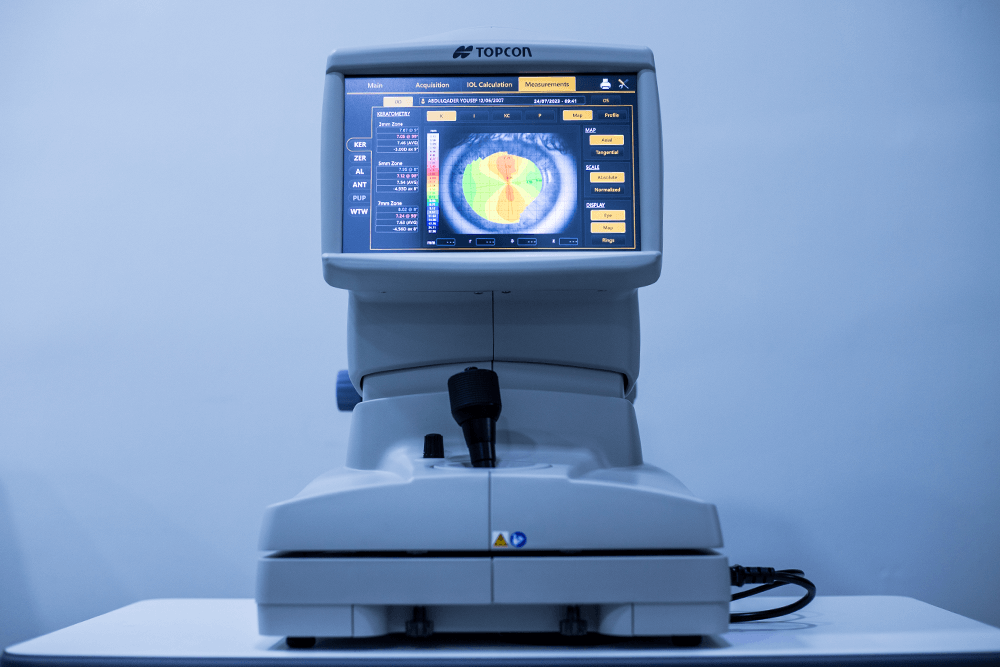








.png?width=281&height=59&name=bookanappointment%20(1).png)
